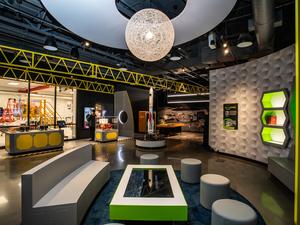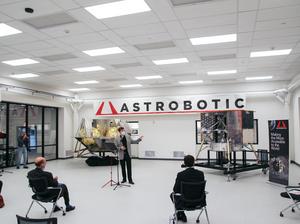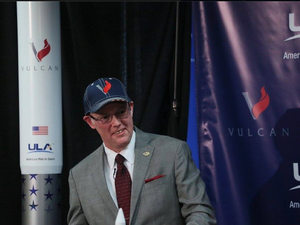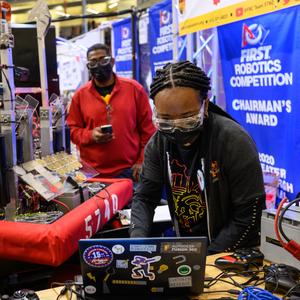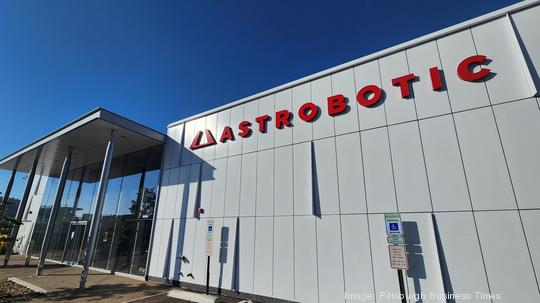
United Launch Alliance has received the first of the flight engines made for the company’s new Vulcan rocket, but the rocket’s debut flight still won’t happen this year due to delays with the mission payload.
The first flight of Centennial-based United Launch Alliance’s key new rocket is slipping into 2023 because a company building the lunar probe being launched is postponing delivery of the spacecraft into next year’s first quarter.
Pittsburgh-based Astrobotic Technologies Inc., the prime contractor for the NASA-funded Peregrine robotic lunar probe, has confirmed the delay.
“More detail concerning the requested schedule shift to Q1 2023 will be announced soon,” Astrobotic tweeted out Tuesday after reports of schedule slippage began to circulate.
ULA, a joint venture of Lockheed Martin Corp. (NYSE: LMT) and Boeing Co. (NYSE: BA) that handles most space launches for the U.S. military, was hired to launch the Peregrine lander on a flight to the moon.
The mission, already a year behind initial schedule, was slated to lift off late this year and debut ULA’s Vulcan Centaur rocket. ULA has been designing the modernized launch vehicle since 2015 as a more affordable replacement to the company’s two existing lines of rockets.
Whether or not ULA would be able to build its first Vulcan in time to launch the Peregrine mission this year depended on when it received rocket engines from Blue Origin, Jeff Bezos’ space manufacturing business.
Two methane-fueled BE-4 engines from Blue Origin will power each Vulcan rocket off the launch pad.
ULA just this week received one of the engines it needs for the first Vulcan flight at its rocket factory in Decatur, Alabama, and the other is in transit from Blue Origin’s manufacturing facility, said Jessica Rye, a ULA spokeswoman.
“Flight engine (FE2) was the first to arrive in Decatur on Sunday,” she wrote in an email, “and the second engine (FE1) departed Kent, Washington, Sunday and is heading to Texas for final acceptance testing.”
If the engine passes testing, it would be delivered to ULA and complete the set the first Vulcan needs.
Whether that would have provided ULA enough time to install the engines and ready the first Vulcan for launch this year isn’t clear.
With Astrobotic delaying its Peregrine mission, ULA has more time to get its rocket ready.
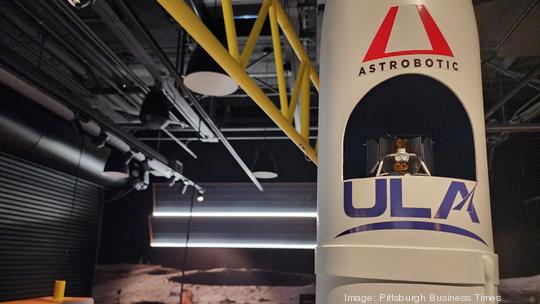
Astrobotic next will complete Peregrine lander’s final assembly, installing solar panels, flight computers, sensors, communications equipment and the payloads the lander is carrying to the lunar surface.
There’s still significant pressure on ULA to get Vulcan flying, and tens of millions of dollars in added costs ride on whether Astrobotic will have Peregrine ready to launch in the first quarter of 2023.
ULA is contracted by the U.S. Space Force to launch 60% of the nation’s military and spy agency satellites and spacecraft over five years, a contract priced using Vulcan Centaur rockets.
But ULA is required to successfully complete two Vulcan launches before the launch vehicle is certified to carry national security payloads into orbit.
ULA had scheduled two civilian Vulcan launches to qualify the rocket for later military missions, the first being Astrobotic’s Peregrine mission and the second a launch of Louisville-based Sierra Space’s Dream Chaser spaceplane on an unmanned NASA cargo supply mission to the International Space Station.
Both launches were originally expected to take place before or in 2022. Now both Sierra Space and Astrobotic have pushed their launches into 2023 to provide more time to work on their spacecraft, leaving ULA with a scheduling crunch to get its rocket certified for military launches.
ULA has designed a dummy payload to launch in place of a paying customer’s mission if that became necessary to keep Vulcan’s military certification on schedule.
If Astrobotic’s Peregrine lunar mission isn’t ready in the first quarter of next year, ULA will launch its dummy payload, Tory Bruno, CEO of ULA, told Reuters news service, in a story published Monday.
Doing so would cost ULA tens of millions of dollars.
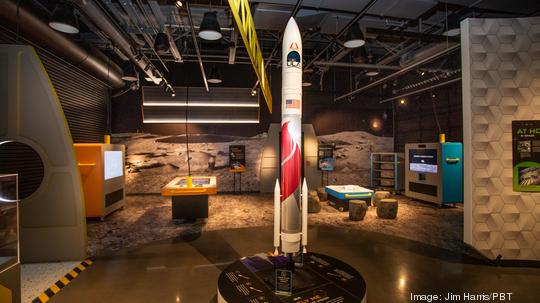
The company is already paying to change one military launch from a Vulcan to a mission using one of ULA’s workhorse Atlas V rockets. The USSF-51 mission carrying military satellites to orbit is scheduled to lift off in December aboard an Atlas V.
ULA is paying for the added costs of switching its USSF-51 to an Atlas V. The rocket costs nearly 50% more to launch than Vulcan’s expected price tag for basic missions, which ULA has forecast to be slightly over $100 million.
The company doesn’t have more Atlas V rockets available to substitute for Vulcans.
The remaining Atlas Vs are all booked after Bezos’ Kuiper Project, a satellite internet service, contracted using the last nine Atlas V rockets to launch dozens of Kuiper Project satellites.
The Kuiper Project will later shift to using Vulcan rockets, too, under a contract it struck earlier this year to buy 38 more launches from ULA.
